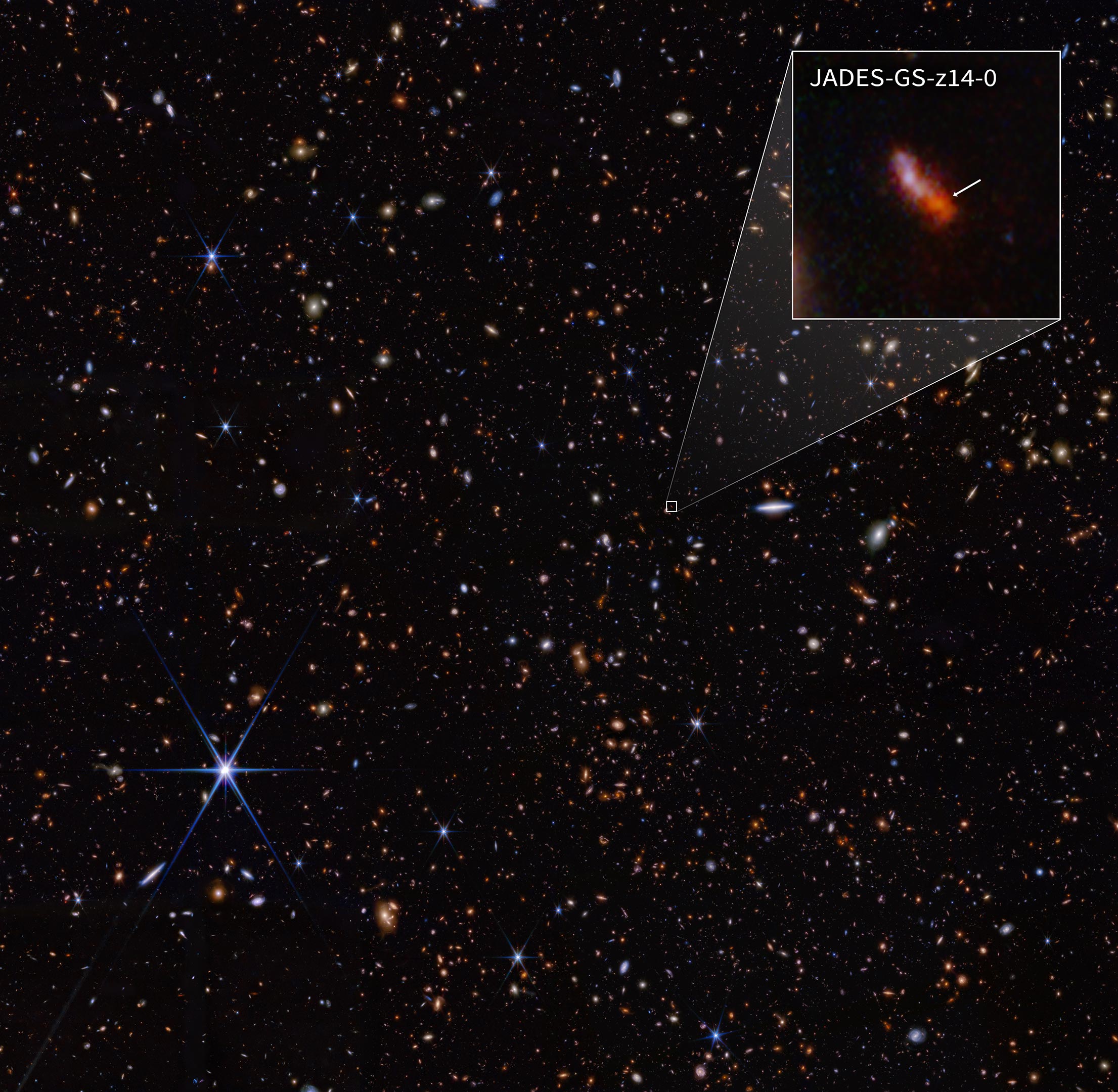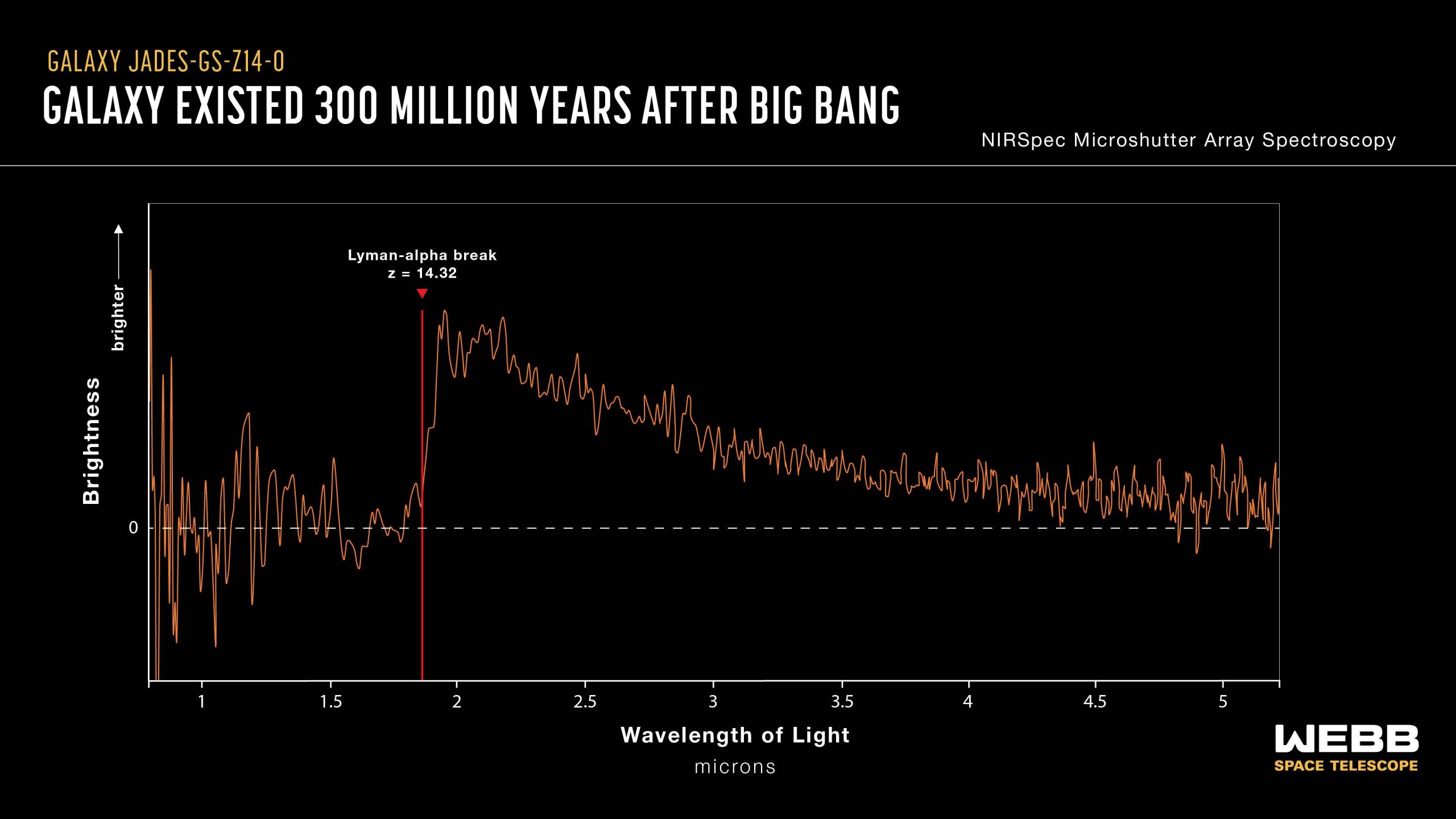"Informed AI News" is an AI-curated publications aggregation platform, ensuring you access only the most valuable information, with the aim of eliminating the information gap and transcending the confines of information cocoons. Find out more >>
NASA's Webb Telescope Discovers Ancient Galaxy, Sheds Light on Early Universe
- summary
- score


NASA's James Webb Telescope has revealed a galaxy, JADES-GS-z14-0, dating back to just 2.9 billion years after the Big Bang. This galaxy, with a redshift of 14.32, breaks previous records, suggesting an unexpectedly swift formation of galaxies in the universe's early stages.
The discovery, part of the JWST Advanced Deep Extragalactic Survey (JADES), employed the telescope's Near-Infrared Camera (NIRCam) and Spectrograph (NIRSpec) to capture and analyze the light from this distant galaxy. The high redshift indicates that the light has been stretched to longer, redder wavelengths due to the universe's expansion, enabling Webb's instruments to detect it.
This galaxy's luminosity and size—over 1600 light-years in diameter—imply a mass several hundred million times that of the Sun, challenging existing theories on early galaxy formation. Furthermore, the presence of oxygen suggests that multiple generations of massive stars had already formed and perished, enriching the galaxy with heavy elements.
These findings not only establish a new distance record but also underscore the complexity and rapid evolution of galaxies in the early universe. This discovery provides a fresh perspective on the initial stages of cosmic structure formation.
| Scores | Value | Explanation |
|---|---|---|
| Objectivity | 6 | Content provides comprehensive reporting on scientific findings with balanced analysis. |
| Social Impact | 3 | Content sparks some interest in scientific community but limited broader social impact. |
| Credibility | 7 | High credibility with solid evidence from authoritative scientific sources. |
| Potential | 5 | High potential to influence future research and understanding of early galaxy formation. |
| Practicality | 4 | Highly practical for advancing scientific knowledge but not directly applicable to daily life. |
| Entertainment Value | 3 | Some entertainment value for science enthusiasts but limited appeal to broader audience. |